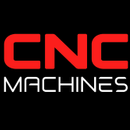The Challenges of Reshoring CNC Machining vs Overseas in 2025

The Challenges of Reshoring CNC Machining vs Overseas in 2025
As we approach 2025, the conversation around reshoring—bringing manufacturing operations back to domestic soil—has gained momentum in the CNC machining industry. While the benefits of reshoring, such as reduced lead times and increased quality control, are significant, the challenges are equally complex. Political headwinds, tariffs, and global disruptions play a crucial role in reshoring decisions, particularly for industries that are heavily reliant on overseas production. This article explores the main challenges that industries face when attempting to reshore CNC machining and examines the global factors that could impact this shift.
1. Industry-Specific Headwinds to Reshoring
Certain industries face more obstacles in reshoring than others due to their reliance on specialized manufacturing processes, supply chains, or labor availability. These industries will likely experience the most difficulty in reshoring CNC machining operations by 2025.
Automotive Industry: The automotive sector, heavily dependent on complex supply chains, faces challenges in reshoring CNC machining for parts like engine components, transmissions, and braking systems. The industry's reliance on specialized overseas suppliers, particularly in Asia, makes reshoring a costly and logistically complex task.
Electronics: The electronics industry, which uses CNC machining for small, high-precision parts, faces significant headwinds in reshoring. The abundance of low-cost overseas suppliers makes it difficult to compete domestically, especially when dealing with mass production at scale.
Aerospace: Aerospace companies might benefit from reshoring in terms of better quality control and intellectual property protection, but they face significant challenges in finding skilled machinists domestically. The industry often requires highly specialized CNC machining that may not be readily available in the U.S., leading to higher costs and delays in reshoring efforts.
2. Political Headwinds for Reshoring
Politics heavily influence the reshoring debate, particularly with shifting government policies and geopolitical tensions. Political headwinds could either propel reshoring forward or present major obstacles that industries need to navigate.
Trade Policies and Tariffs: One of the most significant barriers to reshoring CNC machining is the imposition of tariffs on raw materials and components. While tariffs are intended to encourage domestic manufacturing, they can also drive up costs for CNC machining operations, making it difficult for companies to remain competitive.
For instance, tariffs on imported steel and aluminum, essential materials for CNC machining, can increase the cost of production for U.S.-based machine shops. At the same time, retaliatory tariffs on U.S. exports could reduce demand for CNC-machined parts from international customers.
Labor Costs: Another political challenge is the disparity in labor costs. CNC machining overseas, particularly in countries like China, India, and Vietnam, can still be much cheaper due to lower labor costs. While reshoring initiatives may focus on automation and technology to reduce reliance on manual labor, high domestic wages and labor shortages make it difficult to bring production back without significant cost increases.
Regulatory Hurdles: U.S. manufacturers face stringent regulations, such as environmental standards, that can add to the cost of production. While these regulations ensure safety and sustainability, they can make it more difficult for domestic manufacturers to compete with overseas counterparts, where regulations may be less strict or less costly to comply with.
3. Tariffs: Both a Challenge and an Opportunity
Tariffs, designed to protect domestic industries, can have both positive and negative effects on reshoring CNC machining. While they can incentivize companies to move production back home, they also bring their own set of challenges.
Higher Raw Material Costs: Tariffs on key raw materials like steel, aluminum, and specialized alloys used in CNC machining can drive up production costs domestically. For example, tariffs on imported steel can make it more expensive to manufacture components, thus reducing profit margins and making it harder for companies to compete with overseas manufacturers.
Potential for Competitive Advantage: On the flip side, tariffs can level the playing field by making imported goods more expensive, which may encourage more companies to consider reshoring. With increased tariffs on foreign goods, companies that successfully reshore operations may find themselves with a competitive advantage, particularly in industries like aerospace and defense, where “Made in the USA” is an important selling point.
4. Global Disruptions That Could Spike Demand for Reshoring
While reshoring faces significant challenges, global disruptions could potentially spike demand for domestic CNC machining, as businesses look to reduce risks associated with overseas production.
Supply Chain Disruptions: The COVID-19 pandemic highlighted the vulnerability of global supply chains. With delays, shutdowns, and rising shipping costs, many manufacturers experienced significant disruptions in receiving CNC-machined parts from overseas suppliers. Future disruptions—whether due to pandemics, geopolitical tensions, or natural disasters—could push industries to reshore CNC machining to ensure more stable and reliable supply chains.
Rising Overseas Labor Costs: As wages rise in traditionally low-cost countries like China, the cost advantage of outsourcing CNC machining overseas is shrinking. This trend is expected to continue over the next decade, making reshoring a more attractive option for U.S.-based companies looking to remain competitive in the global market.
Technological Advancements in Automation: Automation, robotics, and AI-driven CNC machining solutions could further accelerate reshoring by reducing the need for manual labor, thus offsetting the higher costs of domestic production. As technology advances, the need for large numbers of low-cost workers diminishes, making it feasible for companies to bring operations back home.
Conclusion
Reshoring CNC machining by 2025 presents significant challenges, particularly for industries like automotive, electronics, and aerospace, which have long relied on overseas supply chains. Political headwinds, tariffs, and labor costs add to the complexity of reshoring efforts, while global disruptions and technological advancements offer opportunities for domestic production to thrive.
As the global manufacturing landscape continues to evolve, reshoring may become more attractive in the face of rising labor costs overseas, supply chain vulnerabilities, and the growing demand for automated production. However, companies will need to navigate a range of economic, political, and logistical challenges to make reshoring CNC machining a viable long-term strategy.


